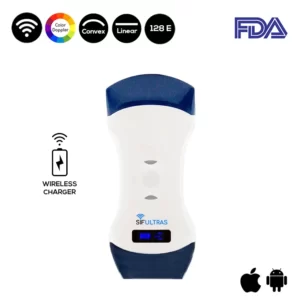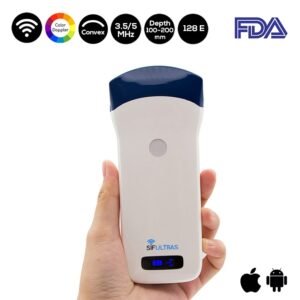Musculoskeletal Ultrasound
Musculoskeletal ultrasound is used to allow physicians to effectively visualize and detect sprains, strains, tears, trapped nerves, arthritis, and other musculoskeletal conditions and efficiently treat them.
This procedure does not require special preparation. Leaving jewelry at home and wearing loose, comfortable clothing is enough to undergo it.
Which device is the most suitable for the Musculoskeletal ultrasound?
Using the Color Double Head Wireless Ultrasound Scanner SIFULTRAS-5.42 FDA enables physicians to visualize the injured musculoskeletal tissue right in the office without having to wait for an MRI, inject the injured structures and maintain continued needle visualization of the targeted areas.
Either it is a superficial lesion or a more in-depth one, the SIFULTRAS-5.42 allows the examination of the musculoskeletal system through its two heads: the linear and the convex.
Its small size and lightweight make the SIFULTRAS-5.42 easy to carry and manipulate, yet do not compensate for the colored image quality.
The high-resolution images are transferred via WiFi into your phone or your tablet’s screen for a clearer visualization of the musculoskeletal system and thus a more specific diagnosis of the musculoskeletal lesion.
The aim behind the use of musculoskeletal ultrasound is to locate tears in muscles or ligaments to help us refer patients to the correct facility.
Musculoskeletal ultrasound is commonly used in cases of:
- Tendon tears or tendinitis of the rotator cuff in the shoulder, Achilles tendon in the ankle, and many other tendons throughout the body.
- Muscle tears, masses, or fluid collections.
- Ligament sprains or tears.
- Inflammation or fluid (effusions) within the bursae and joints.
- Early changes in rheumatoid arthritis.
- Nerve entrapments such as carpal tunnel syndrome.
- Benign and malignant soft tissue tumors.
- Ganglion cysts.
- Hernias.
- Foreign bodies in the soft tissues (such as splinters or glass).
- Dislocations of the hip in infants.
- Fluid in a painful hip joint in children.
- Neck muscle abnormalities in infants with torticollis (neck twisting).
- Soft tissue masses (lumps/bumps) in children.
[launchpad_feedback]



